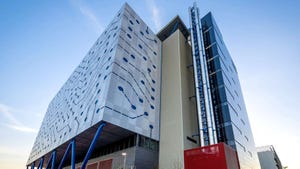How Do Supercomputers Fit With Strategies for Sustainability?How Do Supercomputers Fit With Strategies for Sustainability?
Supercomputers broke the exascale barrier, marking a new era in processing power, but the energy consumption of such machines cannot run rampant.

The biggest, fastest supercomputers in the world, such as Frontier and Sierra, are capable of astounding processing speed, yet they must do so within reasonable power consumption limits.
The energy needed to run supercomputers, as well as keep them cool, is not insignificant -- and in some cases rivals the power demands of entire neighborhoods. Those who oversee these machines continue to find ways to be efficient with energy usage as the world tries to be a bit greener while also supporting productivity.
Tasks given to supercomputers with extraordinary compute power are often of significant importance, for instance national defense or virus research. With such vital work to accomplish, balancing energy consumption and sustainability is often integral to maintaining steady operation of these machines.
Green Supercomputing for Herculean Tasks
The supercomputer known as Sierra, one of the fastest in the world, is used for predictive applications to oversee the reliability of the nation’s nuclear weapons.
“We have the mission of strengthening the United States’ security through the development and application of world-class science,” says Anna Maria Bailey, high-performance computing (HPC) chief engineer and co-chair of the energy-efficient HPC working group at Lawrence Livermore National Laboratory, home of Sierra. The lab’s major goal, she says, is to enhance the nation's defense and reduce any global threats via supercomputing. Sierra runs on IBM Power9 CPUs and Nvidia Tesla V100 GPUs. At peak performance, its processing speed hits 125 petaflops, has 1.38 petabytes of memory, and consumes 11 megawatts of power.
Sierra's Master Plan for a Sustainable Supercomputer
The lab looked into a master plan for sustainability in 2008, Bailey says, which included eventually relocating from facilities that were 30 to 60 years old to newer buildings that could offer more efficiency at the power levels needed for a more advanced machine. “That actually became kind of the basis of our sustainability plan,” she says. “It was an iterative process where we were identifying gaps.”
That process included exploring emerging cooling technologies, Bailey says, including possibilities of liquid cooling in combination with air cooling as those resources evolved on the market. “We have gone from full air to about 90% liquid cooling, 10% air,” she says. “We’re still going to be looking at future technologies for emerging cooling.”
...
About the Author
You May Also Like









